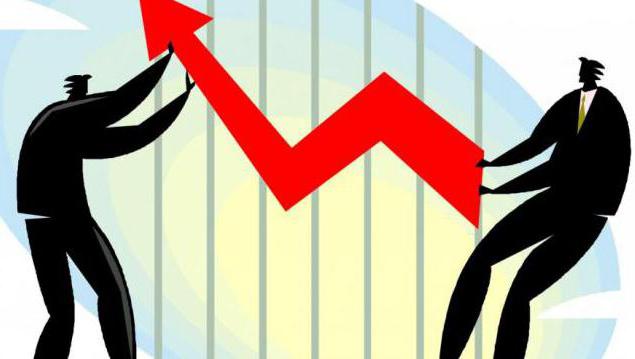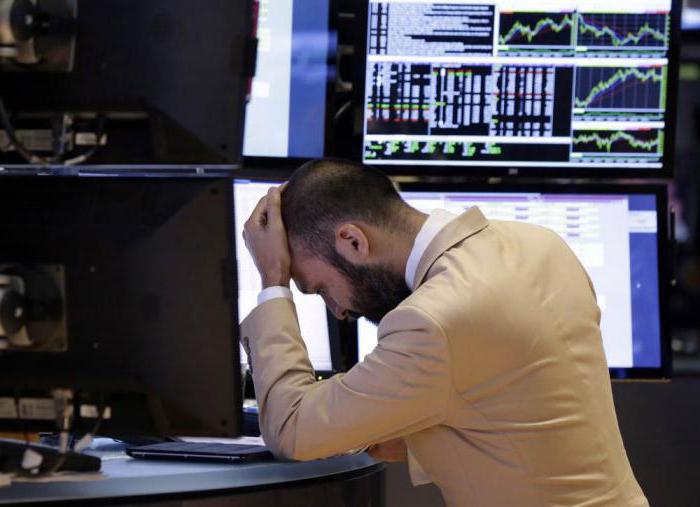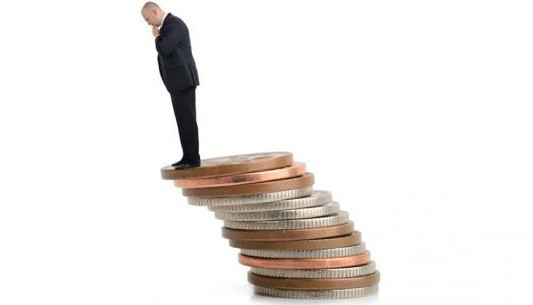Now there are vigorous discussions everywhere about the current economic situation in the country. This is noticeable both on television news reviews, and on discussions in various talk shows, and on blog comments. Especially residents are concerned about the question of whether there will be a default in the near future. Before analyzing the situation, it is necessary to understand what the term "default" means, as well as what are the causes and consequences of this phenomenon.
Deciphering the concept
First, let's analyze what default is in plain language. All over the world, this concept means a situation where the debtor declares his inability to repay the loan. A similar problem can arise both in one person and in a large company. The most global level is the default in the whole state, which takes loans to develop and support its own economy, ensure timely social payments, etc.
If a default has arisen in any country, then usually its government will try to use any means to avoid a similar situation. However, the result is sometimes disastrous, and decisions or actions are not justified. In this case, very negative consequences are possible.
Reasons for the crisis
Experts name several reasons that can lead to default. Among them:
- crisis in the economic sphere;
- unbalanced state budget, in which costs significantly exceed revenues;
- national currency devaluation;
- a global economic crisis that automatically affects countries that are particularly dependent on imports of various goods;
- unstable political situation (in particular, change of political regime);
- problems in the field of foreign policy;
- unreasonable foreign economic activity.
The most significant harbinger of bankruptcy is a sharp decline in the value of the national currency. In this case, what is default? In simple terms, this can be explained as follows: the currency has become cheaper several times, which means several times more expensive imported goods. If the state is vulnerable and heavily dependent on import imports, then in this situation the market may experience a deficit not only for industrial products, but even for food products.
To solve this problem, the state traditionally tries to reduce the import of foreign goods by increasing domestic production. Usually, ordinary citizens are the first to suffer here, whose solvency is sharply reduced. The population begins to spend all previously accumulated savings.
The difference between simple default and technical
Consider what default is in plain language, if we are talking about its technical version. Technical, or, as it is also called, “temporary”, default implies the possibility of correcting errors. If everything is settled, interest is paid on time, then after that it is supposed to pay off debts on the main loan.
And if the default is simple (that is, complete), then all other countries recognize the state as incapable of making payments on loans due to the lack of money in the treasury. All members of the government are dismissed.
Such default can be of two types: cross and sovereign. In a cross, a situation arises when the impossibility of payment for one operation extends to other debt obligations. And what is the threat of default if it is sovereign? In this case, the country is completely unable to repay a single external loan. In addition, she has no opportunity to pay obligations of an internal nature.This can lead to a halt in social benefits, unemployment and a social explosion.
What are the implications?
For any state, a default announcement can lead to enormous problems. Debt obligations will grow, while funds to ensure the social sphere will not be enough. This will entail a wave of tension among the population, because prices will rise for everything, including consumer goods, products, services. At the same time, wages on the contrary will fall or be delayed.
What is default simple language for the population? This is a general decline in living standards, an increase in the number of unemployed citizens and low-income families. At such a time, more and more people with no fixed abode, people with alcohol addiction who are trying to “forget” about problems with alcohol appear on the streets. Even cases of suicide are frequent. Similar phenomena were observed when the 1998 default occurred. Inflation instantly depreciated the country's currency, and so many citizens lost their savings because of this.
Take a look at the story
Crises occurred in various countries since the Middle Ages. Then they simply did not know the word "default", and the situation was the same. Usually this was caused by military clashes, droughts and lean years, natural disasters that destroyed infrastructure, plunged the country into poverty.
France is the leader in the number of defaults. But sometimes there were situations when several states declared their insolvency one after another. Historians count five such cases and call them a string of defaults. For example, during the Great Depression, the United States of America was first declared default, and then other countries announced a sharp decline in the economy.
Features of the default of the 90s
For the Russian Federation, the 1998 default was the clearest example. He brought with him a serious devaluation: the ruble became four times cheaper in just a few months. The reason for this was a change in the political sphere, as well as a sharp decline in oil prices and financial problems. The results were deplorable: employees of budgetary institutions did not receive salaries for 6–9 months, domestic debts grew, and capital was “washed out” of the country. Thanks to the right decisions of the government, it was possible to get out of the crisis.
The results were deplorable: employees of budgetary institutions did not receive salaries for 6–9 months, domestic debts grew, and capital was “washed out” of the country. Thanks to the right decisions of the government, it was possible to get out of the crisis.
There are many more similar examples in other countries over the past decades. So, in 2001, Argentina became insolvent. The last default, which appeared in the United States, took place in 2011. At that time, the external debt of this powerful power amounted to more than $ 16 trillion.
Reasoning about prospects
Recently, economists often argue over whether default in Russia in 2016. These discussions are not unfounded, since the country is experiencing economic difficulties, inflation is rising, and the price of oil is falling on the world market. According to statistics, the income of an average citizen of the Russian Federation has decreased markedly, and some residents have completely lost their source of income due to the reduction. Prices for various products have risen.
As for domestic production, it accounts for only 30% in Russia, and everything else is purchased abroad. But at the moment, the lion's share of imports has been banned due to the imposition of sanctions. In addition, popular agencies presented the world community with a very low rating of the country, which affected its credibility.
However, despite all these indicators, many analysts are sure that it will not come to default in Russia, because external debts have been paid. And in case of crisis, gold and currency reserves have been accumulated in advance, which are a kind of airbag.








